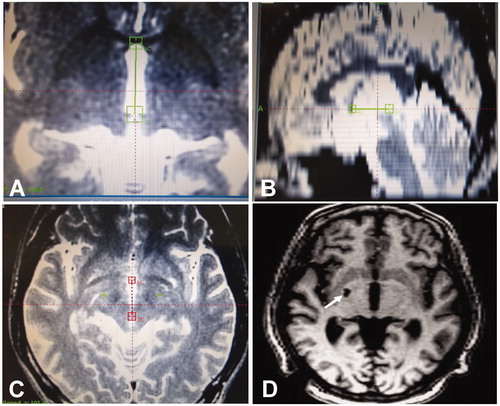Figures & data
Figure 1. Seventeen-year-old man with refractory tic disorders treated with stereotactic radiofrequency thermocoagulation. A. Magnetic resonance imaging (MRI) scan performed for localization of the globus pallidus internus on the axial plane. B. Localization of the globus pallidus internus on the coronal plane of MRI. C. Targeted globus pallidus internus on both sides of the brain. D. Head MRI scan one year after the thermocoagulation, revealing the lesion of thermocoagulation in the right globus pallidus internus. The patient exhibited excellent improvement with no tic symptoms. The arrow indicates the damaged right globus pallidus internus.

Table 1. YGTSS scores before and after surgery (mean ± SD).
Table 2. SDA and 5-HT before and after surgery (mean ± SD, ng/ml).
